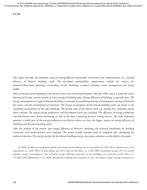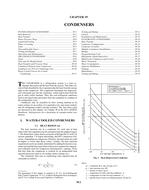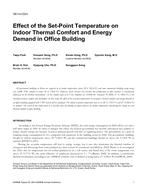A ventilation method to attain an improved indoor air quality with effective use of energy was examined in a small, office-type experimental space. The experiments were carried out using human subjects. The positions of air supply and extract openings were exchangeable in the space, and initial room air temperature and supply air temperature were controlled. Reports the possibilities of ventilation efficiency improvement and lessening of ventilation requirements by upward ventilation at various temperature conditions. The results indicated that with upward ventilation, if the occupant is the only continuous source, the ventilation requirement could be lessened to about 11.8 cfm (5.6 L/s) per person without exceeding a CO2 concentration of 1,000 ppm in the breathing zone because the change of room CO2 content due to variation of the ventilation rate is influenced less by an upward ventilation system than by a traditional mixing system. The supply air temperature must not be higher than the room air temperature to keep the CO2 concentration in the breathing zone low.
KEYWORDS: ventilation, air change rate, efficiency, air quality, indoor, offices, experiment, air supply, temperature, carbon dioxide, rooms, content, room temperature, occupiers
Citation: ASHRAE Trans. 1992, vol.98, Part 1, Paper number AN-92-4-1, 723-729, 8 figs., 2 tabs., refs.
Product Details
- Published:
- 1992
- File Size:
- 1 file , 810 KB
- Product Code(s):
- D-17925


